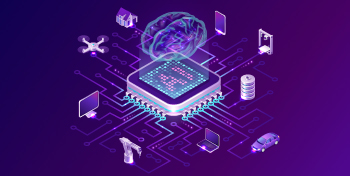The craze for buying digital assets and NFT works of art is now very widespread. Although due to its current popularity it is considered a new trend, NFT appeared in 2014. Even then, you could buy this unique kind of digital asset for a certain amount of cryptocurrency.
Despite the significant presence of this topic in all media, many still wonder what is NFT, how does it work, and why millions are spent on them?
We will try to explain you everything you need to know about NFT.
What is NFT
The abbreviation NFT consists of two words: “non-interchangeable token”. The English term “interchangeable” is used in economics and denotes a form of property and things that can be exchanged for another property or thing of the same value.
The simplest example of such a form of ownership is money, or rather cash. For example, you can exchange a hundred-dollar bill for another hundred-dollar bill, two fifty-dollar bills, or five twenty-dollar bills. The parties who exchanged the banknotes have no profit or loss.
If something is marked as “non-interchangeable”, it means that it cannot be replaced, even if two types of assets may have the same value. An example of this is real estate. Each property has unique characteristics, and it will be almost impossible to find another property with the same characteristics and the same value, so they cannot be replaced.
The token is easiest to translate as a certificate stored on the blockchain network. The principle is the same as with the information about the cryptocurrency, which is also stored in the block chain (transfer time, amount, etc.).
Thus, an NFT is a form of digital asset that cannot be exchanged for another NFT, and information about its purchase or ownership is transparent because it is stored in the blockchain network.
Since this record is stored on the blockchain network, each NFT is unique and its data cannot be changed.
How NFT works
NFT is a unique form of digital assets that function differently from cryptocurrencies, although they are most often bought in cryptocurrencies.
This is a unique digital record stored on the blockchain network. Today, according to Coinmarketrate.com, the most popular NFTs are created on the Ethereum blockchain network, although the Tezos and Flow networks also support NFT. In addition, many NFT projects are created using smart contracts. For example, if you buy an NFT, the smart contract will perform the transfer for you.
With a smart contract, each NFT can have more detailed information, such as information about the person listed as the owner of the NFT, the current value, etc.
Why is all this information about the owner of the NFT and their storage in the blockchain important at all?
NFT digital assets can represent a variety of tangible and intangible things, from works of art, videos, music, concert cards and even tweets. It can be compared to collectibles. However, with NFT, instead of physical ownership, the owner of the collection has a unique digital certificate of ownership stored on the blockchain network.
Since cryptographic technologies prevent any manipulation of data, it is very easy to get information about who owns and how he bought the NFT.
What are the characteristics of NFT
- Authenticity
As already mentioned, each NFT is unique and cannot be easily faked. Each NFT has unique data (metadata) that cannot be manipulated and that proves the authenticity of the work. An excellent example is the DecimalChein (DEL) blockchain, which has issued an NFT confirming the authenticity of diplomas.
- Limited quantity
Many NFT projects have a certain number of images, videos, etc. that need to be created. The limited number of NFTs means that some of them may be very rare. When something is rare, it attracts the interest of a large number of people, and, eventually, the token can achieve greater value.
- Transparency
Since all NFT data is stored in the blockchain, it is easy to get information about the creator of the work, customers (if the work was sold more than once), etc. This degree of transparency confirms authenticity, and eliminates the need for third-party verification.
- Immutability
Since NFTs are based on blockchain technology, they cannot be deleted, cannot be changed, and cannot be replaced with other tokens. This also applies to owning them. After purchasing the NFT (provided that it was an agreement with the author), you become the owner of all copyrights. Compare this with music services like Spotify, iTunes and others. With such services, you buy a license to listen to music, and with NFT you are the rightful owner of the work.
What is the purpose of NFT
Frequently Asked question: “Why would I buy an NFT if I can just download what I need to my computer?”
People most often buy NFT for three reasons:
- simple proof of ownership
- a new way to create a collection
- social status
When we talk about creating new collections, we don’t mean collecting postage stamps or Pokemon cards. Today, digital art collections are being created that have a large number of followers and a close-knit community around them. Just look at the number of people who follow everything related to the so-called Cryptopunk or Axie Infinity game.
NFT communities are not limited to art. They are also present in the gaming, sports and fashion industries.
When something becomes popular, most people want to be part of this trend. That’s why many people decide to buy NFT because they think they’re missing out on a good opportunity (FOMO).
Things have gone so far that many world celebrities and even companies like Visa have been involved in the NFT frenzy.
NFT is currently a global phenomenon, and it is not surprising that most of them are trying to create their own copy. There is another backstory, and that is that customers hope that over time the price of their NFT will rise enough to provide them with a profit.
Rarely does anyone pay attention to what NFT as an innovation in the blockchain industry can really improve.
The Internet has opened up new markets for many people. Today, you can easily create content or a product, and easily find a market for them. However, one of the problems faced by many (especially creators of content, such as music, images, movies), is copyright.
Digital authors have a hard time keeping track of who is using their content. Unfortunately, there is also the possibility that someone else will take someone else’s job.
NFT stands here as a potential solution to the problem. The goal is to use blockchain technology to indicate the authenticity of digital assets. Hence, both the buyer and the creator can benefit from each other.
For example, they can easily agree on how copyrights will be used after purchase. Ultimately, NFT digital assets can be a financial incentive for authors to continue creative work, while they can serve consumers as a form of investment.
The value of the NFTs they bought can increase after a certain time, and reach a significant profit if they decide to sell them.
Is it worth considering a non-interchangeable token as an investment tool?
In each area of investment, with each purchase, you must first study the investment object well.
NFT is a completely new market that is growing rapidly, and as each new emerging market brings with it opportunities and risks. Billions of dollars have already passed through the NFT industry, and we are only in our infancy.
Due to the great interest and the jump in the value of non-interchangeable tokens, there is also a growing fear of missing out on the opportunity to participate (the so-called FOMO). The market attracts a large number of buyers who are trying to find a “good and safe” investment. On the other hand, there are new creators who are trying to post and sell their content well.
In such a situation, it is difficult to distinguish good long-term projects from short-term earning opportunities. All of the above makes NFT a risky investment for a user who is just getting to know this area.
Investing in non-interchangeable tokens just because you feel like you’re missing out on a good opportunity to make a quick buck is not the best idea.
On the other hand, it makes sense to participate if you understand how the art trade works, collecting sports cards, stickers, and the like, and if you see the long-term value of NFT projects. Of course, provided that you also have prior knowledge of blockchain technology and cryptocurrencies.
Conclusion
In the near future, the entire market will have to go through a maturation process. There is no doubt that the NFT market will go through several cycles of rising and falling prices. As soon as it stabilizes and only high-quality projects remain, NFT will become an important economic factor.
In addition, the market will need to find solutions to problems such as high commissions and copyrights. There are often authors who claim that unknown people took their works and advertised them on the NFT market as their own.
Despite the challenges, NFT will continue to grow in the coming years. The fact that multinational companies like Visa, Paypal and others are entering the NFT space shows very clearly that this is a real application and not a passing trend.


